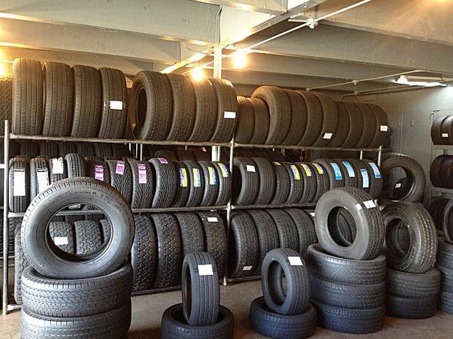Discover Top Tire Tracks Morris IL: Your Ultimate Destination for Top Quality Tire Solutions
Discover Top Tire Tracks Morris IL: Your Ultimate Destination for Top Quality Tire Solutions
Blog Article
The Environmental Benefits of Proper Tire Upkeep
Maintaining proper tire care is frequently forgotten, yet its effect on the atmosphere is profound. From minimizing gas usage to reducing exhausts output, the benefits are significant. Appropriate tire maintenance not just prolongs the life expectancy of tires yet also lowers land fill waste and adds to enhanced air high quality. The interconnectedness of these benefits highlights the important function that easy maintenance practices can play in advertising environmental sustainability.
Decreased Gas Consumption
Improving tire maintenance methods can lead to a significant reduction in fuel usage for automobiles. According to the U.S. Division of Power, underinflated tires can lower gas mileage by 0.2% for every 1 psi decrease in stress in all four tires.
In enhancement to tire pressure, normal tire turnings and positionings also play a critical role in fuel efficiency. Erratically used tires can increase gas intake as the engine functions harder to preserve rate and grip. By preserving appropriate alignment and turning tires at advised periods, vehicle drivers can ensure even wear and prolong the life of their tires, inevitably saving fuel and decreasing their carbon footprint.
Extended Tire Life Expectancy
Extending the life-span of tires is a crucial element of efficient lorry maintenance practices that can generate cost financial savings and environmental benefits in the long run. By appropriately preserving tires, motorists can dramatically prolong their use, reducing the frequency at which brand-new tires need to be manufactured and old ones dealt with. This not just conserves useful resources however also decreases the energy and emissions related to tire manufacturing and disposal procedures.
Frequently examining tire pressure, revolving tires, and making sure correct alignment are essential steps in extending tire life-span. Adequate step depth is critical for ideal grip and safety and security, yet it additionally plays a role in for how long tires can be utilized before needing replacement. In addition, avoiding aggressive driving habits that speed up tire wear, such as severe braking and sharp turns, can additionally enhance tire resilience.
Inevitably, increasing the longevity of tires with aggressive upkeep not just profits the environment by reducing waste and preserving resources but also brings about cost savings for car proprietors by delaying the demand for brand-new tire purchases.
Reduced Exhausts Outcome
Efficient tire upkeep methods contribute to a reduction in emissions output, straightening with ecological sustainability goals in the vehicle market. By keeping optimal tire pressure degrees, drivers can help mitigate these adverse ecological impacts.
Moreover, properly maintained tires also improve traction and lower rolling resistance, even more boosting fuel effectiveness. This, subsequently, lowers the quantity of exhaust gases launched their explanation right into the environment. In addition, making sure tires are effectively inflated and aligned can prolong the life-span of the tires, reducing the frequency of tire substitutes and the connected ecological costs of tire manufacturing and disposal.

Decreased Landfill Waste
Provided the positive influence of appropriate tire maintenance on lowering exhausts output, an additional considerable ecological advantage is the possibility for reduced land fill waste. By guaranteeing that tires are correctly inflated, lined up, balanced, and rotated on a regular basis, their lifespan can be significantly expanded.

Improved Air High Quality
Enhancing air quality via correct tire upkeep practices is an important facet of lasting environmental stewardship. When tires are underinflated, they develop extra moving resistance, leading to enhanced fuel intake and greater discharges of unsafe pollutants such as carbon monoxide and nitrogen oxides. Properly filled with air tires not just boost fuel efficiency yet also minimize the quantity of contaminants released right into the air.
In addition, well-kept tires with proper walk deepness and alignment add to much safer driving problems, decreasing the likelihood view website of mishaps that can lead to the launch of extra contaminants right into the atmosphere. By expanding the lifespan of tires through routine upkeep and turning, less tires are discarded too soon, decreasing the environmental influence of tire disposal and manufacturing processes.
Final Thought
In final thought, correct tire maintenance supplies many environmental advantages. It is crucial for individuals to prioritize tire maintenance as a simple yet effective method to safeguard the environment for future generations.
Correct tire maintenance not only extends the life-span of tires but likewise decreases landfill waste and adds to boosted air quality - morris tire service. By maintaining appropriate alignment and turning tires at suggested periods, chauffeurs can make certain also prolong the life and wear of their tires, ultimately conserving fuel and decreasing their carbon footprint
By properly preserving tires, vehicle drivers can significantly extend their use, decreasing the frequency at which new tires require to be produced and old ones disposed of.Regularly checking tire pressure, revolving tires, and guaranteeing correct placement are vital steps in expanding tire life expectancy. Furthermore, making certain continue reading this tires are properly pumped up and lined up can extend the life-span of the tires, decreasing the frequency of tire replacements and the linked environmental prices of tire production and disposal.
Report this page